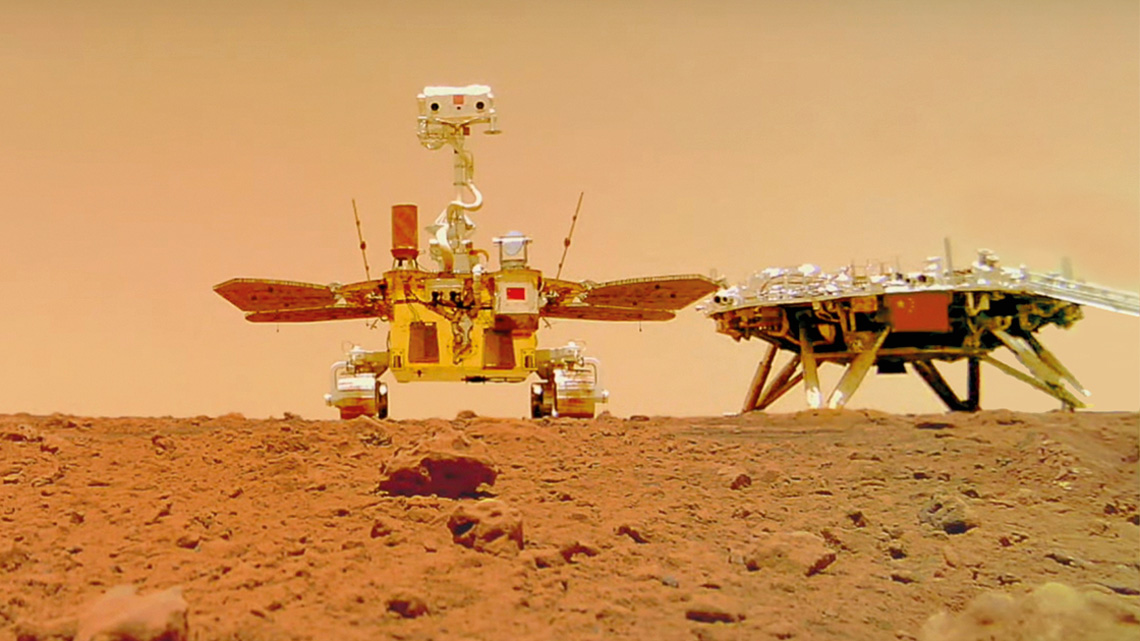The Mars Rover Penetrating Radar (RoPeR), part of Tianwen-1, China’s first Mars mission, revealed the soil on Mars to be highly heterogeneous and geologically complex, with structures that resemble crater walls, shaped by the climate and wind erosion. In contrast, comparable data from the far side of the Moon are fairly uniform, even though the two surfaces were formed in close geological epochs. Launched on July 23, 2020, the Tianwen-1 probe entered Mars’s atmosphere on February 10, 2021, after a 202-day, 475-million-kilometer journey. The RoPeR is one of the scientific instruments on board the Zhurong rover, which landed in the region known as Utopia Planitia on May 15, 2021, to examine the effects of volcanoes, ice, and wind, which will provide a better understanding of how the planet’s environment has evolved over time (Geology, February 9).
RepublishAstronomy
Chinese probe examines soil from Mars

The Zhurong rover with the Tianwen-1 probe on China’s first mission to Mars
China News Service / Wikimedia Commons

